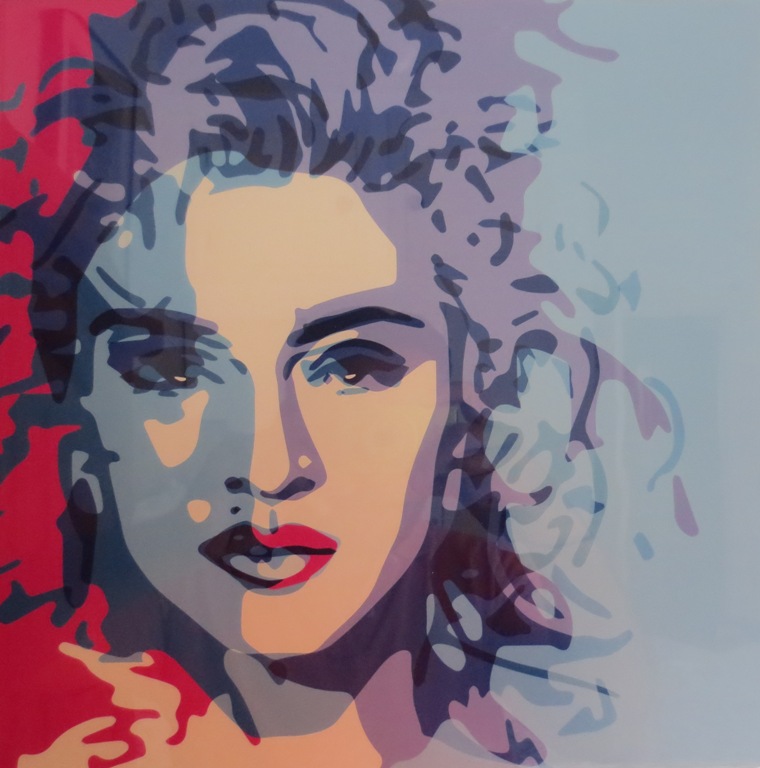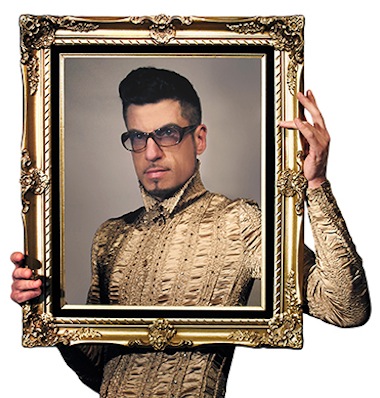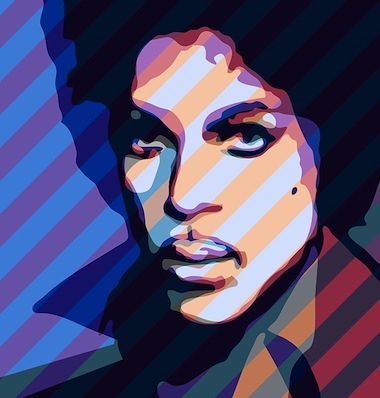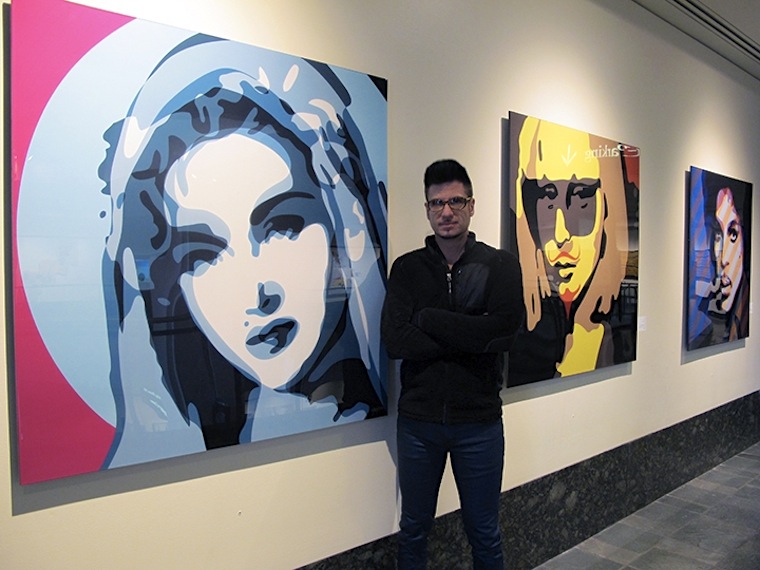Madonna is a legend.
Madonna by Herb Ritts is an icon.
Prince is a genius.
Prince in ‘Purple Rain’ is an icon.
Michael Jackson doing the moon walk is an icon.
The delineation is subtle, but important.
Reflecting the world of pop culture, bending it to his vision, and presenting his own glorious version of a pop universe has made Troy Gua into one of the most exciting contemporary artists. Very much a product of the 80’s, when Warholian soup cans and Haring stick figures brought pop art into colorful, modern-day focus, Gua brings the stylistic flourishes of that decade into the present-day artistic landscape, making the image of a pop moment into an iconic creation.
Take a look at the featured commission piece of Madonna featured above, (or any of his spectacular ‘Pop Hybrid’ series for that matter). On its shiny surface it is at once familiar, but also brand new. Combining the visages of several Madonna moments over the years, it yields a prismatic result that resonates through three decades and still manages to be remarkably of the moment. Through the clever use of shadows, layering, and an assembly of images that any student of the Madonna canon knows well, it is an instantly-eternal classic ~ the very definition of an icon. Its glossy sheen, the immediate recognition of the subject, and the bold juxtaposition of opposing interpretations – sinner and saint, virgin and whore, past and future, relevant and passé – is what gives the work such nuanced heft. This is what separates and elevates an iconic artist like Gua from the rest of the pack.
I imagine a future where the world is out of room. It’s a world where, in order to save space, even our thoughts, our memories, our nostalgia becomes distilled, consolidated, hybridized, and layered on top of itself. ‘Pop Hybrids’ are the reduction of personality into logo, the reduction of individuality into the collective, the reduction of photography into design. They are a subtraction of images: the recycling, re-using and reducing of two or more images into a new and unique iconographic collection of shapes. Conceptually opposed to Warhol’s emphasis on repetition, this work suggests that we are running out of space even for our cultural icons to retain a solo spot light in our crowded collective conscience. The work deals with iconography, ironic duality and satirical juxtapositions. By layering thoughtfully paired cultural icons with one another, these visually arresting pieces challenge the viewer to decipher the image while making the sardonic, metaphorical and sometimes philosophical connections within the image. ~ Troy Gua
As he hones his skills and refines his output, Gua’s work has become iconic in its own way, with a trademark look and a deceptively clean style that straddles the line between the abstract and the completely recognizable. His output functions partly as a way of both combating and celebrating the fracturing of a collective experience and mainstream popularity that has been the bane and boon of pop culture in the age of the internet. The dilution of impact and ubiquity, coupled with an ease of distribution, has transformed the age in which we live. Artists can reach the world in a single click, and so can anyone with the slightest artistic inclination. The internet knows no such distinction, and good and bad alike can make the most of an egalitarian system that has yet to filter out the posers. The real artists – the truly great ones – will carry on much as they always have, and the best still have a way of rising to the top.
{For more of Gua’s work and background, please visit his captivating website, ‘The Art of Troy Gua – Contemporary Pop Conceptualism.‘}
Back to Blog



